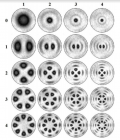This website uses cookies to ensure a better user experience.
To get more information, please read our Cookie Statement.
Scientific project
 | HrZZ - IP-2014-09-7515Holography and interferometry under weak illumination | |
| project leader | Nazif Demoli | |
| associates | Hrvoje Skenderović Davorin Lovrić Jadranko Gladić Denis Abramović Mario Stipčević Ognjen Milat Mladen Pavičić Marin Karuza Vedran Vujnović | |
| web page | http://hiwi.ifs.hr | |
| start date | 01.05.2015. | |
| end date | 31.05.2019. | |
| total ammount | 967.000,00 kn | |
| research areas | Optical physics |
Abstract
The primary interest of this project is to advance the use of digital holography and interferometry based systems and techniques under the conditions of weak illumination, as a continuation of recent achievements (N. Demoli, H. Skenderović, and M. Stipčević, Opt. Lett. 39, 5010, 2014). In such conditions, the standard CCD recordings of digital holograms suffer from the lack of information, since they are either obscured by noise or flattened by the bit depth conversion. We have shown that by using a photon counting detector (PCD) instead of a CCD sensor and by employing high dynamic range of the PCD, the original information can be efficiently preserved. We are motivated to extend the previous research to other holography and interferometry techniques as well as to perform contextual experiments and experiments in high-sensitivity interferometry. As a result of this project, the specialized photon counting detectors and direct laser hologram writing technique will be also developed.
Main tasks of the project include:
(i) Investigation of the role of the experimental parameters for recording the time-averaged and pulsed digital holograms under weak illumination. Expected results are: finding the optimum range of main recording parameters (beam ratio, exposure time, SNR, contrast) and experimental limitations due to coupling of various frequences (surface vibrations, laser pulse, repetition rate of PCD).
(ii) Implementation of contextual experiments by means of photon polarization and orbital angular momentum. Expected result is to demonstrate quantum contextuality in a four-dimensional Hilbert space in a new way different from previous.
(iii) Investigation of a quantum effect of a photon buildup in a Fabry-Perot cavity by employing high-sensitivity interferometry. Expected result is to demonstrate that only quantum theory can explain the distribution of events within a given time window.
(iv) Developments of the specialized photon counting detectors and direct laser writing of holograms technique.










